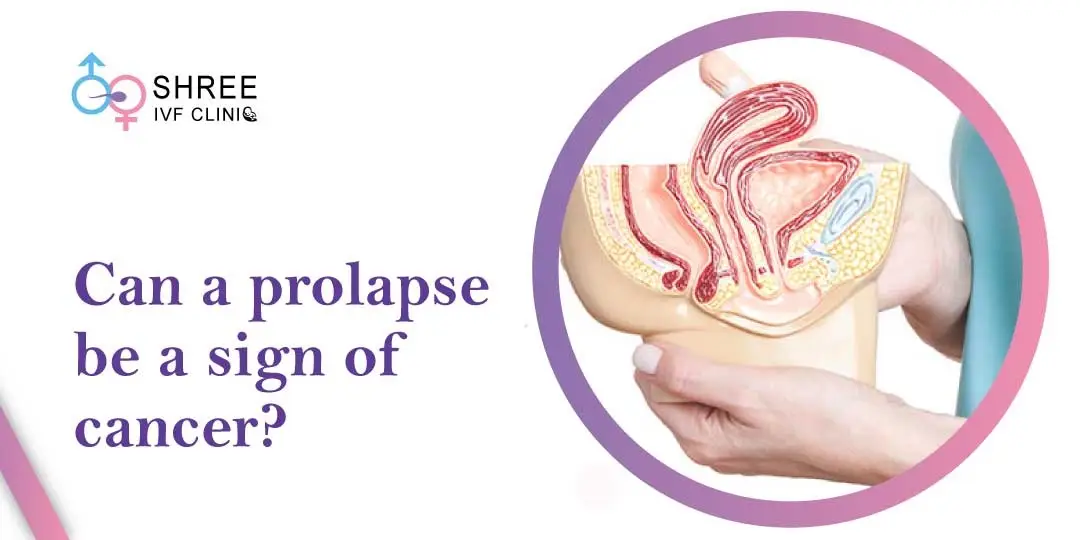What Are Prolapsed Uterus Treatment at Home?
UPDATED ON 3 DEC. 2021

AUTHOR
Dr Jay Mehta
Scientific Director & IVF Specialist with 10+ years of experience
TREATMENT
CONDITION
GET IN TOUCH ON
Women of any age might develop uterine prolapse. However, postmenopausal women who have given birth by vaginal delivery are more likely to be affected.
Most women with mild uterine prolapse do not need medical attention. However, therapy may be beneficial if uterine prolapse causes discomfort or interferes with your daily activities.
Symptoms
Symptoms and indicators of mild uterine prolapse are rare. However, moderate to severe uterine prolapse is associated with the following symptoms and signs.
- Your pelvis feels heavy or constricted
- Your vagina has a protrusion of tissue
- Incontinence (urinary incontinence) with retention of urine
- Having a hard time relieving oneself
- The sensation of sitting on a little ball or having something fall out of one’s genitals
- Your vaginal tissue may feel a little loose, or you may notice a tingling feeling there
- As the day progresses, symptoms might become more unpleasant
Can a prolapse correct itself?
Prolapsed organs are unable to heal on their own and, in most cases, deteriorate over time. If you have a prolapsed bladder, there are many treatment options accessible to you.
- Vaginal pessary: A pessary is a doughnut-shaped device made of rubber or plastic designed to fit around or beneath the lowest section of the uterus (cervix). This device assists in holding the uterus in place and propping it up. A healthcare expert will fit and install the pessary, which must be disinfected regularly and removed before sexual activity.
- Hysterectomy and prolapse repair: Hysterectomy is a surgical operation used to remove the uterus from the body. Uterine prolapse may be corrected with this surgery. It may be accomplished by a cut (incision) made in the vaginal wall (vaginal hysterectomy) or through the abdomen (abdominal hysterectomy) (abdominal hysterectomy). A hysterectomy is a serious surgical procedure, and the removal of the uterus implies that pregnancy is no longer an option.
- Prolapse repair without hysterectomy: Put simply, this technique entails repositioning the uterus to its usual position. To keep the uterus in place, it may be necessary to reconnect the pelvic ligaments to the lower half of the uterus, which will hold it in place. Depending on the method employed, the operation may be performed via the vaginal or abdominal opening.
How do you stop a prolapse from getting worse?
To lower your chances of uterine prolapse, do the following:
- Treat and prevent constipation: Drink lots of fluids and consume meals rich in fiber, such as fruits, vegetables, beans, and whole-grain cereals, to keep your body healthy.
- Avoid heavy lifting and lift correctly: Lifting from your legs rather than your waist or back is recommended.
- Control coughing: Take care of a persistent cough or bronchitis as soon as possible, and avoid smoking.
- Avoid weight gain: Speak to a doctor to assess your optimal weight and, if necessary, to get guidance on weight-loss measures.
Kegel exercises
Pelvic floor muscles may be strengthened by kegel exercises. Prevents uterine prolapse from deteriorating and improves symptoms associated with uterine prolapse by strengthening the pelvic floor.
To practice Kegel exercises, follow these instructions:
- Your pelvic floor muscles should be tightened (contracted) to prevent gas from escaping.
- For five seconds, hold the contraction and then relax. If you find this task too challenging, begin withholding the pose for two seconds and relaxing for three.
- Aim for 10 seconds of holding the contractions in each session.
- Attempt to complete at least three sets of 10 repetitions every day.
Physical therapists who use biofeedback to reinforce kegel exercises may be the most effective. You may use biofeedback to make sure you’re exercising your muscles correctly and for a long enough period.
Even while sitting at your work, you may discreetly do your Kegel exercises with the help of a Kegel trainer.

4,790+
379K+
” Every individual and couple’s journey is unique, and
finding the right solutions tailored to their specific
circumstances can make all the difference “
Related Post
What should you not do with a prolapse?
The following are things you should avoid doing to prevent the signs of uterine prolapse from becoming worse:
- Heavy lifting should be avoided
- Avoid heavy lifting regularly
- Exercises with a lot of impacts should be avoided.
- Avoid doing abdominal core workouts that are too severe.
- Reduce the amount of time spent standing by sitting or laying down periodically during the day
- When you have constipation or diarrhea, avoid straining.
- Smoking should be avoided
Conclusion
The prognosis for uterine prolapse is often extremely excellent in the vast majority of instances. Treatment for the problem often produces extremely favorable outcomes, and lifestyle adjustments (such as keeping a healthy weight and exercising) may help to avoid a prolapse from occurring again. Nevertheless, prolapses are a serious medical condition that should be discussed with your healthcare physician. Your healthcare professional can assist you in developing a treatment plan and developing healthy lifestyle behaviors to help avoid future prolapses.
AUTHOR
Dr Jay Mehta
Scientific Director & IVF Specialist with 10+ years of experience
TREATMENT
CALL US 24/7 FOR ANY HELP
GET IN TOUCH ON
Share Article on
Recommended Reading
How is a Bleeding Prolapse Treated?
Epithelial, Germ Cell, and Stromal are ovarian cancer types which are classified by their originating cells
Can Pelvic Organ Prolapse Go Away On Its Own?
Uncover the potential for pelvic organ prolapse (POP) to resolve naturally. Explore symptoms, management options, and factors influencing resolution.
Can Pelvic Organ Prolapse be a Sign of Cancer?
Pelvic Organ Prolapse (POP) doesn’t directly cause cancer, but women with this condition are at a higher risk of developing certain cancers like uterine & gallbladder cancers




